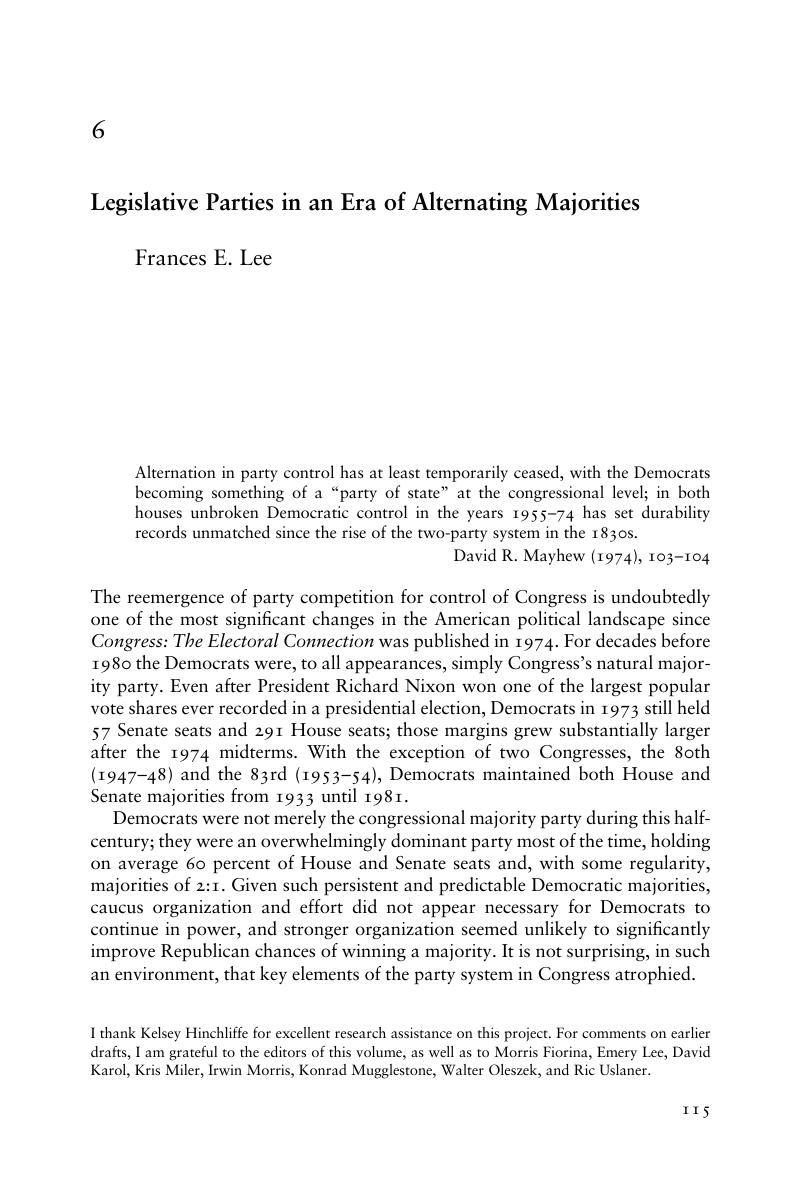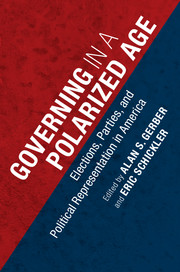Book contents
- Governing in a Polarized Age
- Governing in a Polarized Age
- Copyright page
- Contents
- Contributors
- 1 Introduction
- Part I Political Representation and Democratic Accountability
- Part II Continuity and Change in Party Organizations
- 6 Legislative Parties in an Era of Alternating Majorities
- 7 Parties within Parties
- 8 Where Measures Meet History
- Part III Partisanship and Governmental Performance
- Part IV Conclusions
- Index
- References
6 - Legislative Parties in an Era of Alternating Majorities
from Part II - Continuity and Change in Party Organizations
Published online by Cambridge University Press: 20 October 2016
- Governing in a Polarized Age
- Governing in a Polarized Age
- Copyright page
- Contents
- Contributors
- 1 Introduction
- Part I Political Representation and Democratic Accountability
- Part II Continuity and Change in Party Organizations
- 6 Legislative Parties in an Era of Alternating Majorities
- 7 Parties within Parties
- 8 Where Measures Meet History
- Part III Partisanship and Governmental Performance
- Part IV Conclusions
- Index
- References
Summary

- Type
- Chapter
- Information
- Governing in a Polarized AgeElections, Parties, and Political Representation in America, pp. 115 - 142Publisher: Cambridge University PressPrint publication year: 2016
References
- 3
- Cited by



